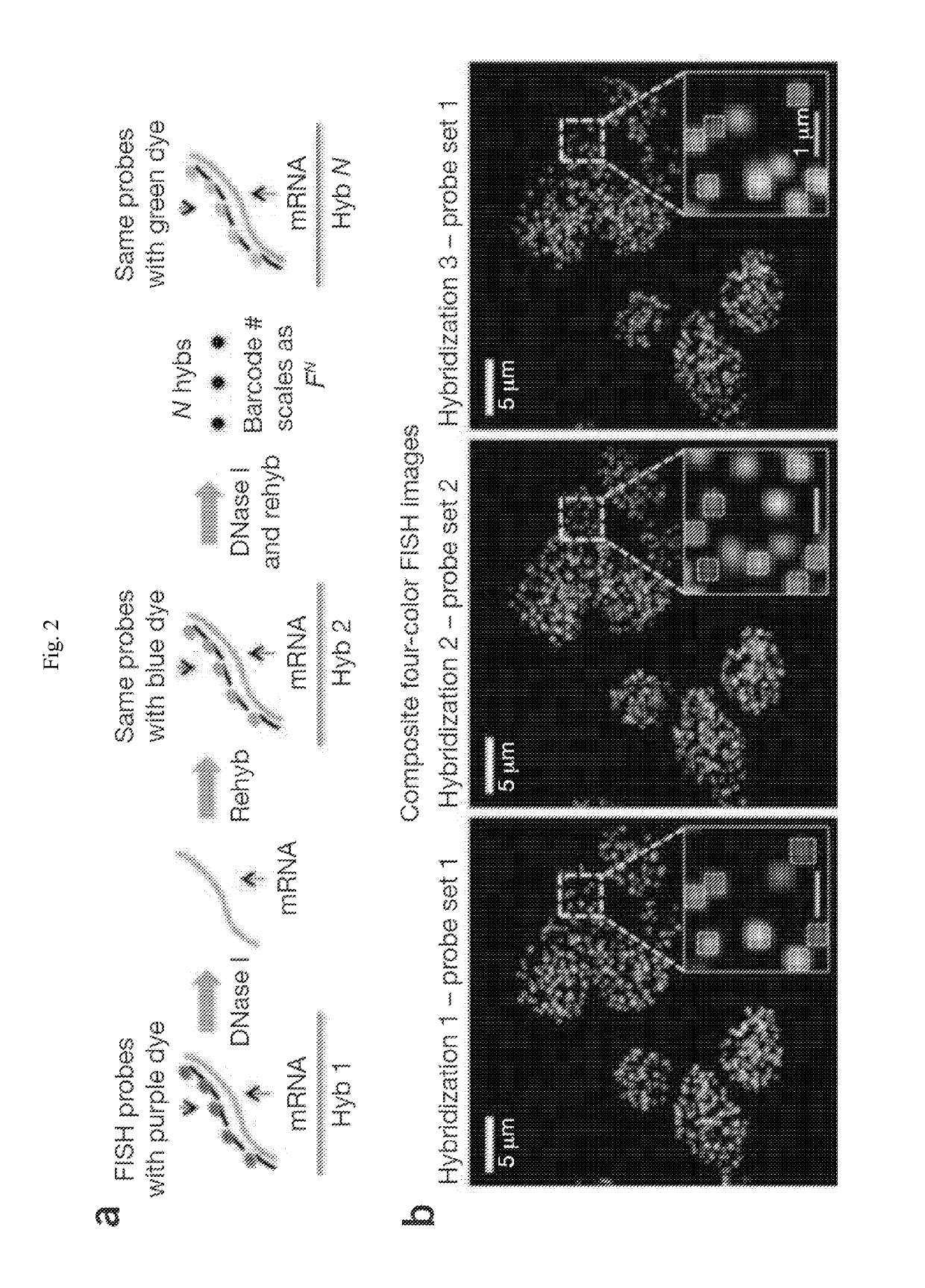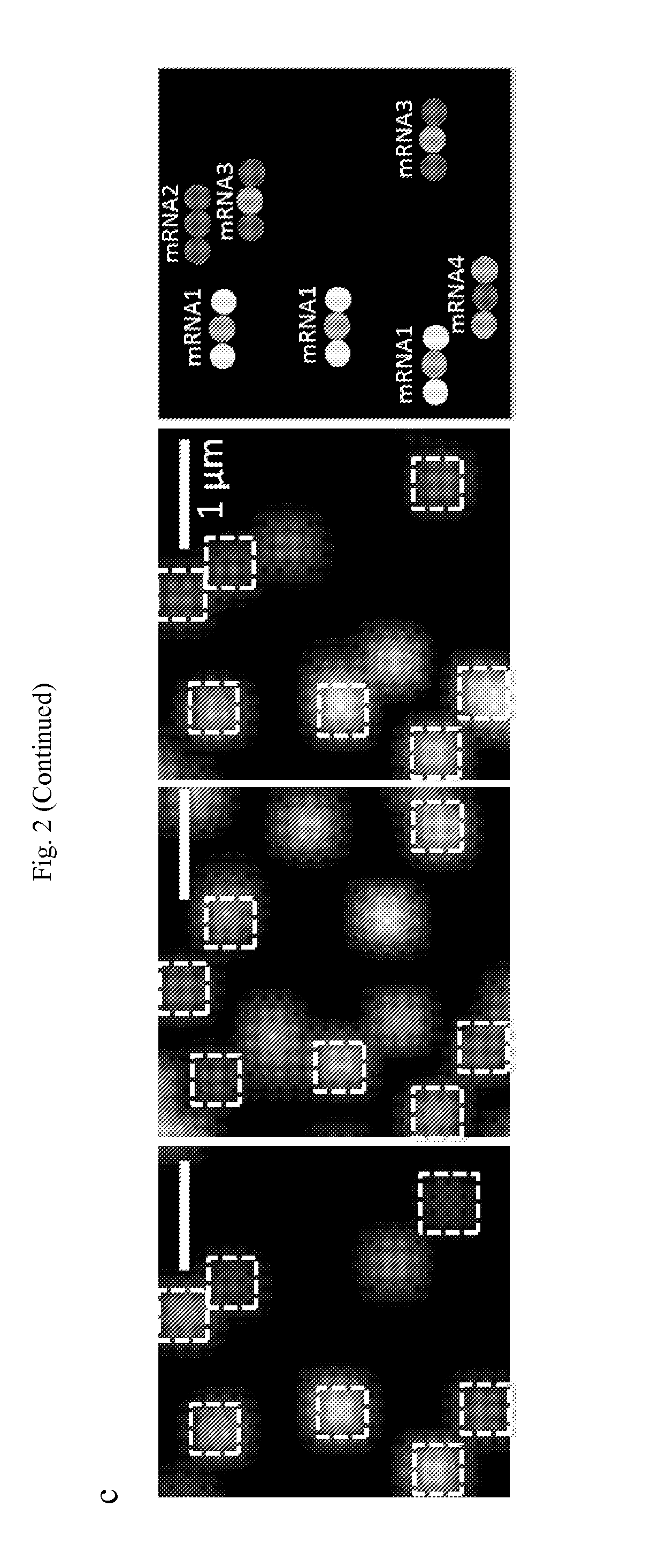Multiplex labeling of molecules by sequential hybridization barcoding
a technology of complex labeling and barcoding, applied in the field of complex labeling of molecules by sequential hybridization barcoding, can solve the problems of increasing the complexity of data analysis, and achieve the effects of reducing severity, reducing incidence of one, and delay ons
- Summary
- Abstract
- Description
- Claims
- Application Information
AI Technical Summary
Benefits of technology
Problems solved by technology
Method used
Image
Examples
Embodiment Construction
[0084]Among other things, the present invention provides new methods, compositions and / or kits for profiling nucleic acids (e.g., transcripts and / or DNA loci) in cells.
[0085]In some embodiments, the present invention provides methods for profiling nucleic acids (e.g., transcripts and / or DNA loci) in cells. In some embodiments, provide methods profile multiple targets in single cells. Provided methods can, among other things, profile a large number of targets (transcripts, DNA loci or combinations thereof), with a limited number of detectable labels through sequential barcoding.
[0086]FIG. 1 depicts methodologies in accordance with the present invention. As depicted, the present invention provides methodologies in which multiple rounds of hybridization (contacting steps) with labeled probes profiles nucleic acids (e.g., mRNAs) present in cells. Specifically, as depicted in FIG. 1, sets of probes that hybridize with nucleic acid targets in cells are provided, wherein probes (i.e., dete...
PUM
| Property | Measurement | Unit |
|---|---|---|
| Tm | aaaaa | aaaaa |
| temperature | aaaaa | aaaaa |
| OD | aaaaa | aaaaa |
Abstract
Description
Claims
Application Information
 Login to View More
Login to View More - R&D
- Intellectual Property
- Life Sciences
- Materials
- Tech Scout
- Unparalleled Data Quality
- Higher Quality Content
- 60% Fewer Hallucinations
Browse by: Latest US Patents, China's latest patents, Technical Efficacy Thesaurus, Application Domain, Technology Topic, Popular Technical Reports.
© 2025 PatSnap. All rights reserved.Legal|Privacy policy|Modern Slavery Act Transparency Statement|Sitemap|About US| Contact US: help@patsnap.com



